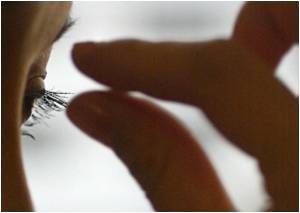
The scientists decided to make and visualise olympicene whose five-ringed structure was entered on ChemSpider, the RSC's free online chemical database of over 26 million records two years ago.
"When doodling in a planning meeting, it occurred to me that a molecular structure with three hexagonal rings above two others would make for an interesting synthetic challenge," said Professor Graham Richards CBE, RSC Council member.
"I wondered: could someone actually make it, and produce an image of the actual molecule?" he noted.
Chemists at the University of Warwick, Dr David Fox and Anish Mistry, used some clever synthetic organic chemistry - the modern molecule designer's toolbox - to build olympicene.
"Alongside the scientific challenge involved in creating olympicene in a laboratory, there's some serious practical reasons for working with molecules like this," said Dr Fox.
Advertisement
"For example these types of molecules may offer great potential for the next generation of solar cells and high-tech lighting sources such as LEDs," he stated.
Advertisement
To truly bring olympicene to life, the Physics of Nanoscale Systems Group at IBM Research - Zurich in Switzerland analysed the chemical structure of olympicene with unprecedented resolution using a complex technique known as noncontact atomic force microscopy.
Using the technique IBM scientists imaged a single olympicene molecule just 1.2 nanometres in width, about 100,000 times thinner than a human hair.
"The key to achieving atomic resolution was an atomically sharp and defined tip apex as well as the very high stability of the system," explained IBM scientist Dr. Leo Gross.
"We prepared our tip by deliberately picking up single atoms and molecules and showed that it is the foremost tip atom or molecule that governs the contrast and resolution of our AFM measurements," he added.
Source-ANI









